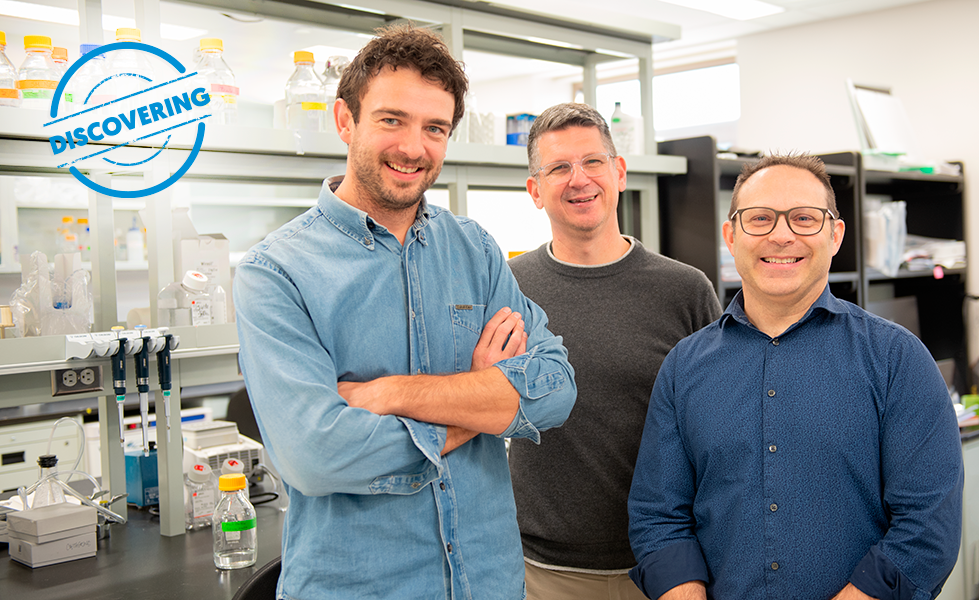
Discovery of an Essential Role for Light in the Organization of Vision Cells
From left to right: Michael Housset, Michel Cayouette and Dominique Filion.
Brand new work, from the laboratory of Dr. Michel Cayouette, Director of the Cellular Neurobiology Research Unit at the Montreal Clinical Research Institute (IRCM) and Full Professor in the Department of Medicine at the Université de Montréal, recently published in the scientific journal Developmental Cell, reveals for the first time that photoreceptor cells in the mammalian retina exhibit planar polarity, meaning that their light-sensitive cilia orient themselves in a coordinated manner in the plane of the tissue. What's more, the scientists were able to establish through this work that this polarity is induced by light during a critical period of development, representing a novel mechanism for cellular organization within an animal organism.
Why it's important?
This discovery, led by Michael Housset, a Research Associate in the Cayouette laboratory, in collaboration with Dominic Filion of IRCM's Microscopy and Imaging core facility, is crucial because it shows that light not only serves as a visual stimulus, but also plays a role in the spatial organization of light-sensitive cells in the retina as their visual function begins to take shape. This advance changes our understanding of the mechanisms controlling retinal development and vision optimization, and opens up new perspectives on the potential role of light in the development of other tissues and organs. This polarity could also have implications for retinal-related pathologies, notably in the context of aging or degenerative diseases.
“This work represents an important step towards understanding the hyper-complex structures and mechanisms of vision,” said Dr. Jean-François Côté, adding : “I congratulate Michael Housset and the entire Cayouette laboratory, which, once again, is at the forefront of healing research. I would also like to underline the important role played by our core facilities in supporting cutting-edge research.”
This work was carried out in collaboration with colleagues at the Université de Montréal (N. Cortes, C. Casanova) and McGill University (H. Vali, C. Mandato), and was made possible by funding from the Gaëtane and Roland Pillenière Chair, the Canadian Institutes of Health Research (CIHR), the Réseau de recherche en sciences de la vision (RRSV) of the Fonds de recherche santé du Québec, and the Fondation pour la recherche médicale (FRM) in France.
About the Cayouette laboratory
With a number of first-rate publications to its credit, Dr. Michel Cayouette's laboratory is dedicated to understanding the cellular and molecular mechanisms underlying normal retinal development and its pathologies, with the aim of paving the way for the development of innovative therapies to slow or reverse vision loss.




